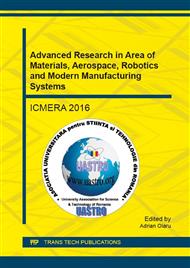p.183
p.188
p.194
p.204
p.210
p.219
p.225
p.231
p.236
Aspects of Functional Abilities Changes in Aging
Abstract:
The aim of this study is to assess functional status and prevalence of functional limitations/disabilities in aging, in order to identify possible strategies in assistive technologies. Investigations were undertaken on 138 patients, men and women, aged between 45 and 90 years, divided into four age groups: group A patients aged 50 - 59 years; group B aged 60 - 69 years; group C aged 70 - 79 years; group D aged 80 - 92 years. The results showed significant reduction in the ability to carry out basic activities of daily living (ADL) in patients aged 80 - 90+ years compared to patients aged 45-59 years (p = 0.05) and those of 60-69 years old (p = 0.043). Ability to carry out instrumental activities of daily living (IADL) was significantly reduced (p = 0.0503) in patients aged 70-79 years compared with patients aged 45-59 years and 60-69 years. Patients older than 80 years showed significant reduction ability to conduct IADLs compared to patients aged 45-59 years (p = 0.0047), aged 60-69 years (p = 0.0049) and aged 70-79 years (p = 0.029). There was a significant negative correlation of ADL (r = - 0.25, p <0.01) and IADL (r = - 0.39; p <0.01) with patients age. In conclusion, ADLs decline appears relatively late, after 80 years, while IADLs begins at about the age of 70 years. Seniors which experience decline in ADLs and IADLs can benefit from a variety of assistive technologies which promote independence and safety as they compensate for sensory, physical and cognitive impairments.
Info:
Periodical:
Pages:
236-240
Citation:
Online since:
December 2016
Authors:
Keywords:
Price:
Сopyright:
© 2017 Trans Tech Publications Ltd. All Rights Reserved
Share:
Citation:


